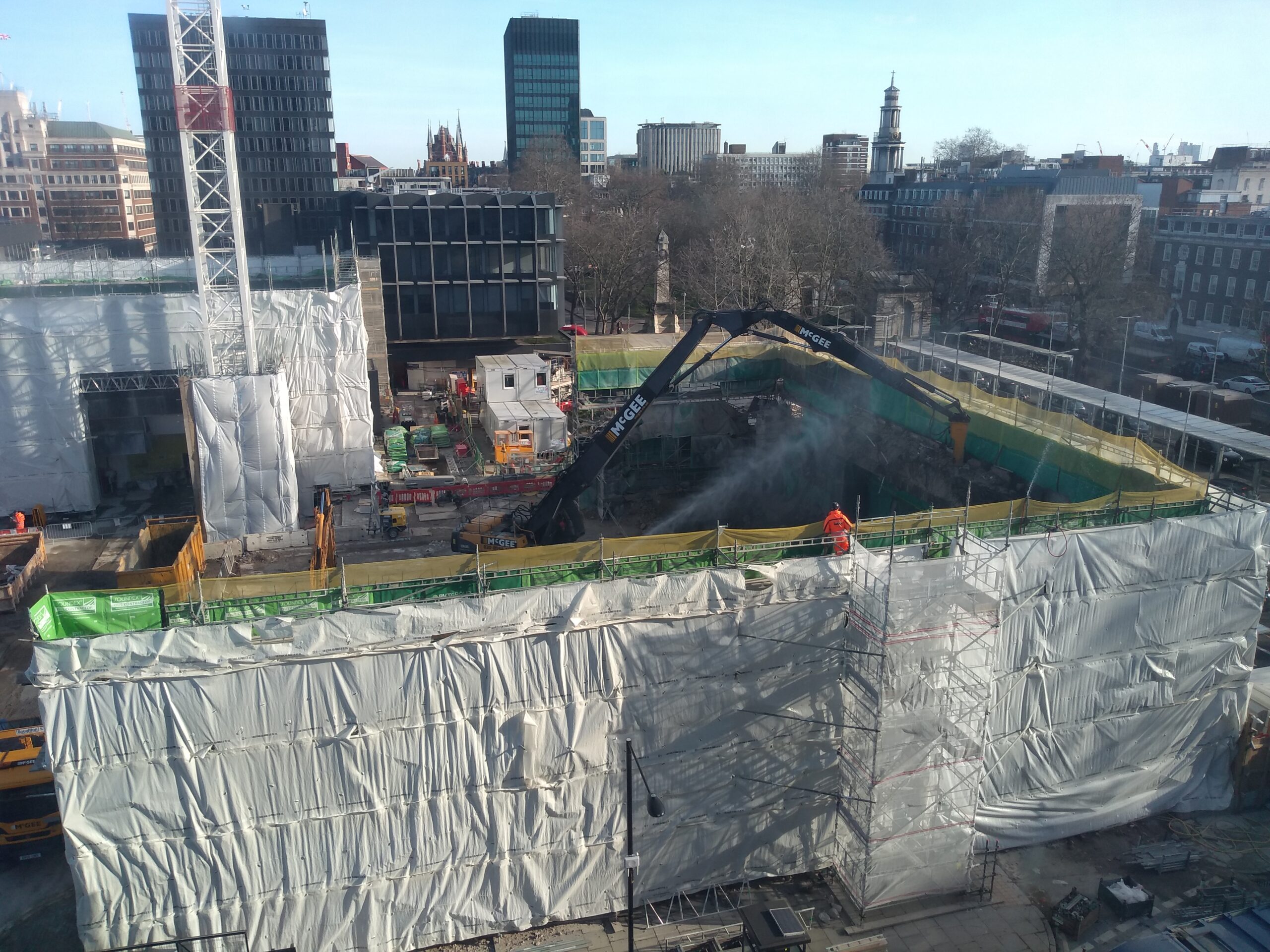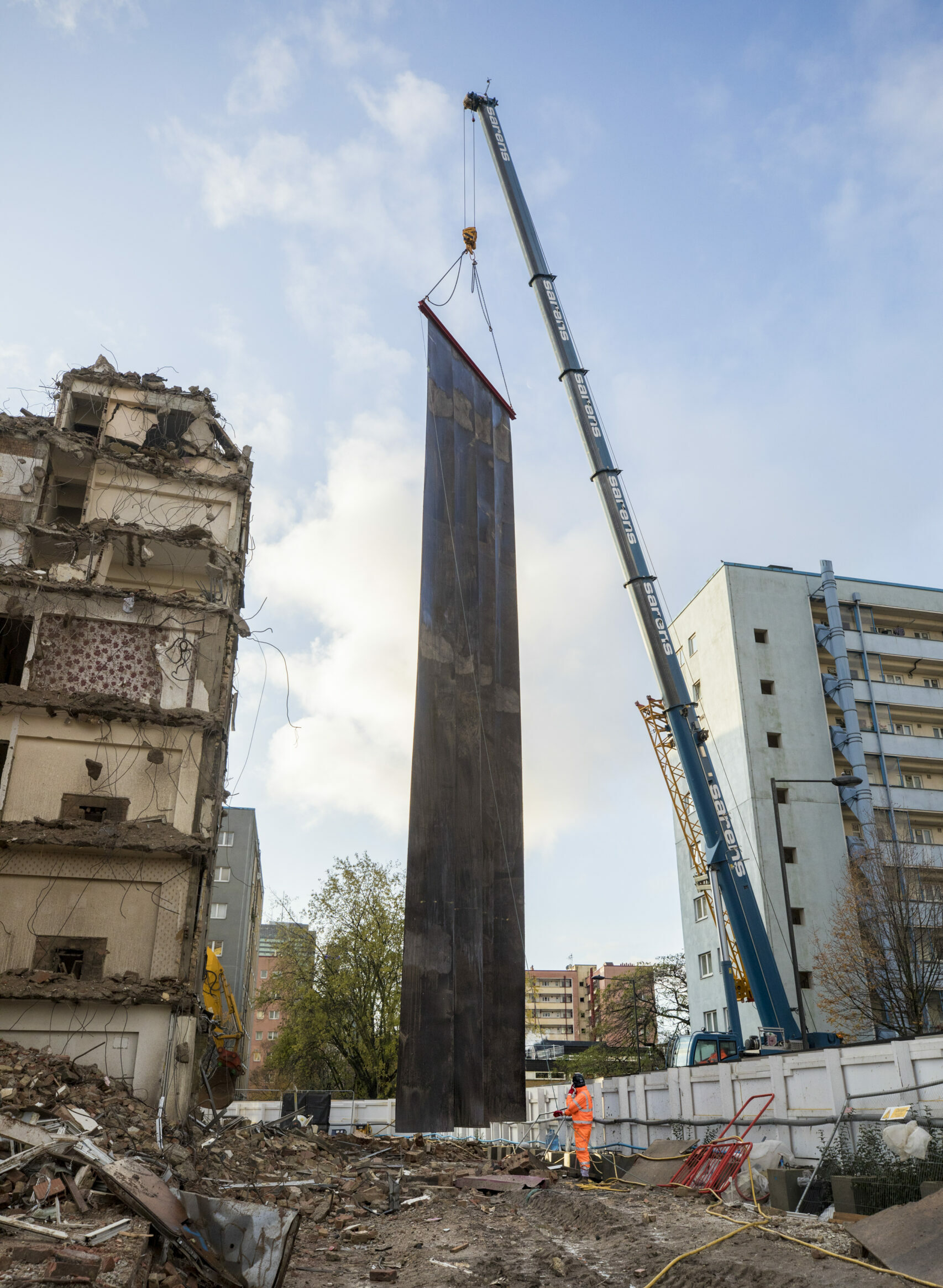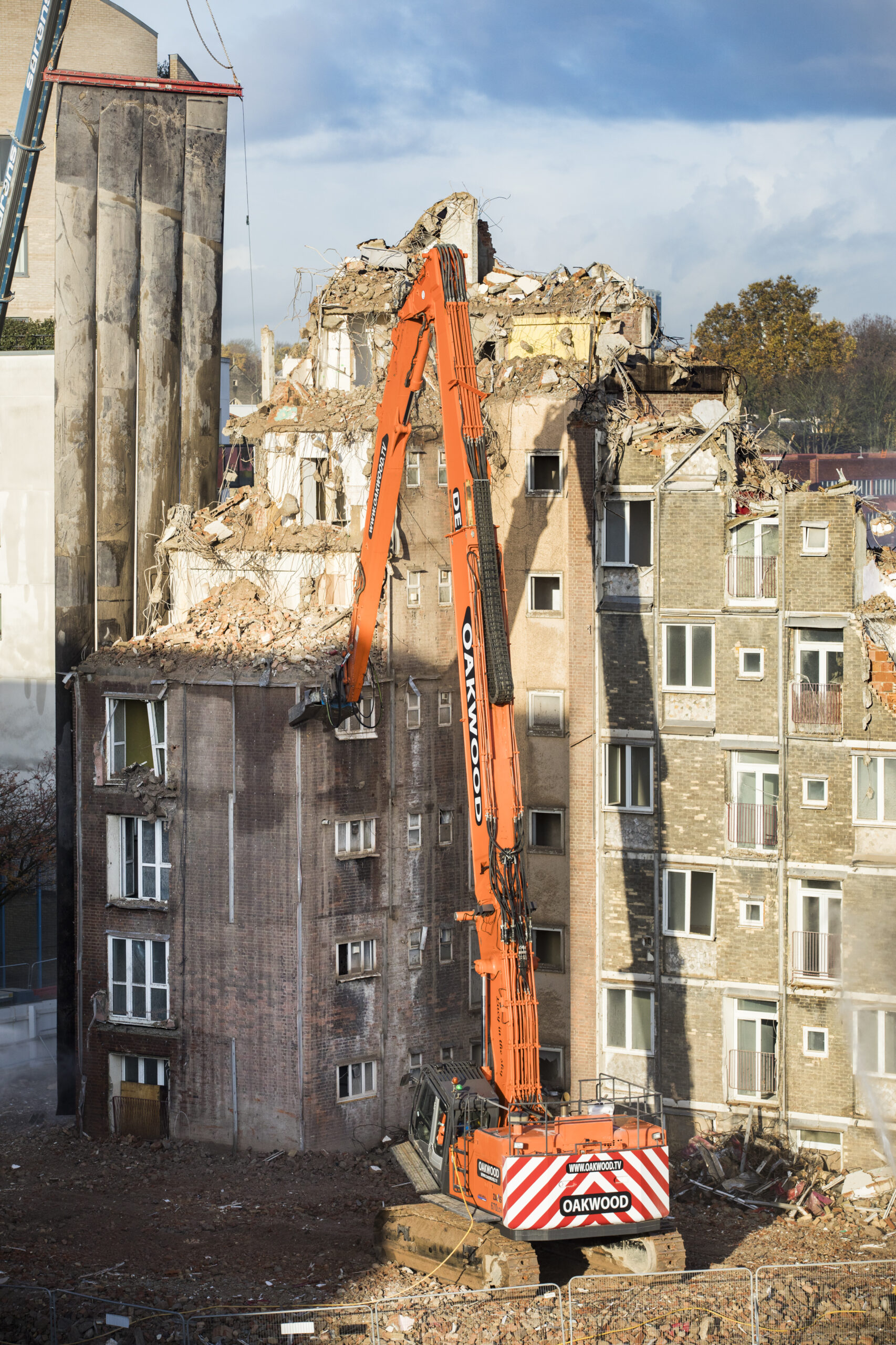Project Outline
The Area South Enabling Works Contract (EWC) covered HS2 Phase One from London Euston out to the M25, spanning 26.8km, and 7 London Boroughs (both in urban and rural environment settings), requiring engagement with statutory and non-statutory bodies, including multiple community groups. The challenge in successfully delivering the project involved the scale of HS2 environmental requirements, the number of stakeholders, the volume of work, the delivery timescales, and the size of the supply chain. Temple were appointed as Noise and vibration management specialists on the on large-scale demolition works.
Works undertaken included large-scale demolition works, utility diversions, ecology surveys, ground remediation, watercourse activities, highways realignments, monitoring and instrumentation, structural reinforcements, archaeology, site clearance, and the establishment of site compounds.
The control of noise and vibration arising from the works was critical due to the high profile of the project, the large number of sensitive receptors surrounding each worksite, and that being the first significant works undertaken arguably set a benchmark with stakeholders for the performance of all future construction works.
The Environmental Minimum Requirements (EMRs) arising from the High-Speed Rail (London – West Midlands) Act 2017 imposed controls on the delivery of the scheme, such that the significant construction effects identified in the Environmental Statement will not be exceeded and reasonable steps taken to avoid or mitigate such effects.
Our Services
The EWC integrated exemplar Noise and Vibration management across 20+ sites, requiring the installation, maintenance, and management of over 100 Noise and Vibration monitors across four London boroughs and upwards of 30 Section 61 consents, plus numerous other consents, dispensations, variations, and undertakings & assurances to third parties.
Our works on the project included:
- development of trigger action plans at sensitive non-residential receptors such as Maria Fidelis School and the Royal College of General Practitioners
- providing an electrical subcontractor alongside Temple staff to ensure installations on lighting columns were completed to relevant standards and maintained appropriately
- monthly reporting of over 75 noise and vibration monitors, with tailored outputs for each London borough
- attended noise and vibration monitoring at particularly sensitive properties and/or in response to complaints
- noise insulation and temporary rehousing assessments for residential properties close to long-term worksites
Our Role
A noise and vibration management regime was developed and agreed upon with HS2 and the local authorities, with a network of monitors deployed around each of the major work sites. Monitoring locations were chosen for their long-term viability, including consideration of power, physical access, and relevance to both EWC and other HS2 construction activities. Monitoring was used to collect additional baseline data, evaluate compliance with Section 61 consents, identify exceedances of significant effect levels, and aid in the investigation of complaints or incidents.
Prior consent under Section 61 of the Control of Pollution Act (1974) was sought for all works except agreed low risk activities. A key element of Section 61s is the need to demonstrate that where the works give rise to impacts, the methodologies and mitigation represent the best practicable means in the control of noise and vibration. Assessment as part of Section 61 also forms the final evaluation of works against HS2 requirements.
Our Value
During our time on the project, we developed tools to aid our ability to deliver high-quality work and provide rapid and informed responses to issues. These included:
- implementation of real-time web monitoring systems on the project which allowed relevant stakeholders to easily access and view data
- bespoke processes and procedures for survey coordination and site work
- tools to manage the large volume of equipment and monitoring data
- processes to automate and streamline elements of the monitoring and calculation work, allowing for more automation and less human error
- automatic daily downloading to Temple’s servers, weekly data verification, and hourly checks with alerts if a monitor is unresponsive
- development of an online GIS tool, Areal, which allows for the presentation and sharing of monitoring and prediction results via a web mapping interface
- weekly and monthly reporting with data automatically processed into output spreadsheets. One second of raw data was processed into hourly data giving LAeq, LAmax, LAmin, LA90, LA10, % of data captured, and weather data/exclusions for each hour over the week/month. The data was then placed into the various HS2 reporting templates.
These tools and automation techniques saved approximately 2 minutes daily per monitor and approximately 15 minutes monthly reporting per monitor. With 75-monitors operational (50 noise and 25 vibration), this saved approximately 80 hours per month compared to traditional methods, as well as eliminating any additional time due to human error.
Having previously built and modelled approximately 50 versions of the original Environmental Impact Assessment (EIA) construction models, Temple’s knowledge of the works, environment, and relevant stakeholders was invaluable. Beyond the EIA, Temple was responsible for Noise Insulation (NI) assessments in Euston, updated from the Environmental Statement (ES) model with an extra 1000+ receptors to provide greater resolution of where and when NI was required. The model was further refined for EWC Section 61 models. Our knowledge of the area and modelling methodologies has meant that results are consistent and directly comparable to those reported in the ES.
Photos: John Zammit of Absolute Photography Ltd and Marcus Richardson (Noise and Vibration Specialist at CSJV)



